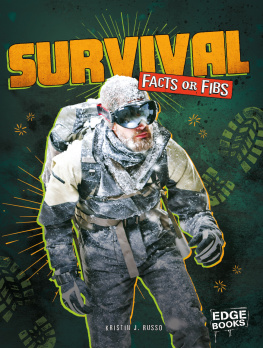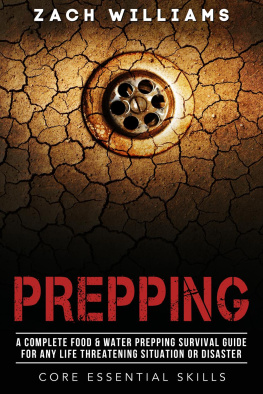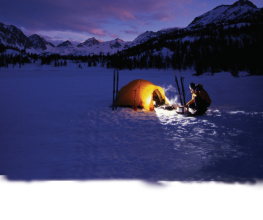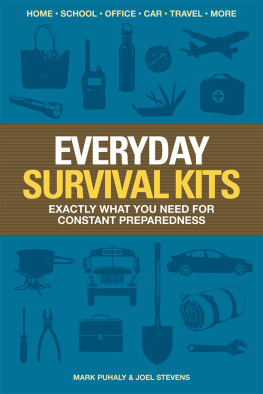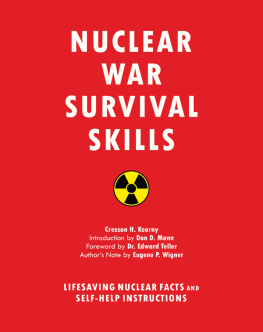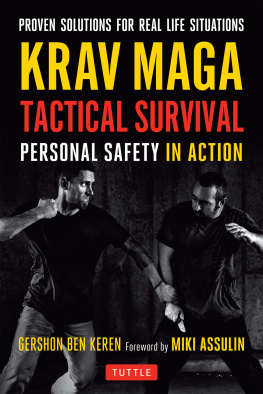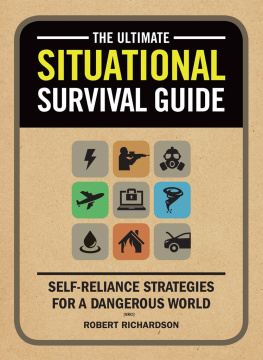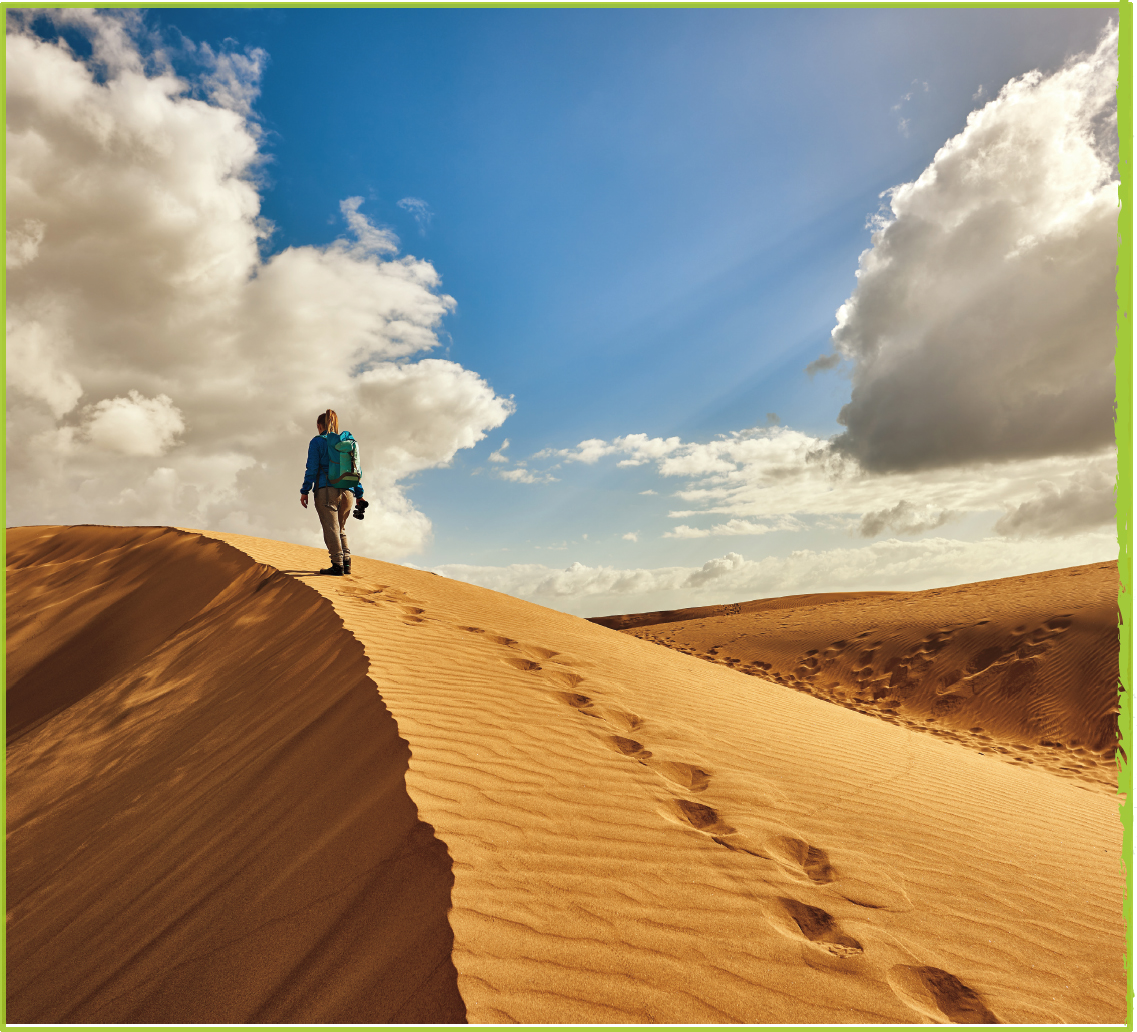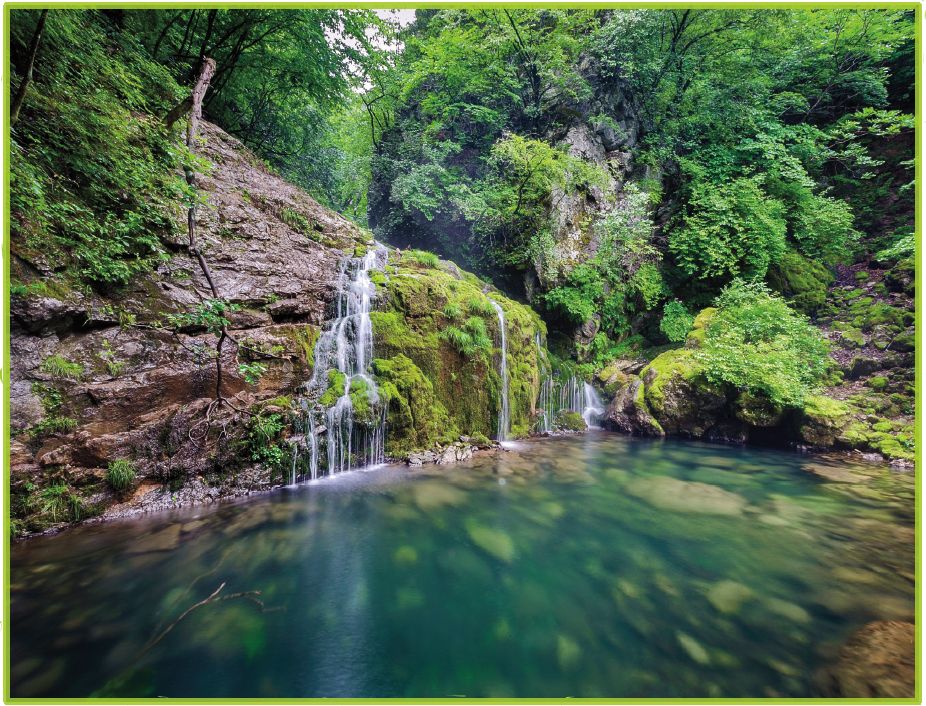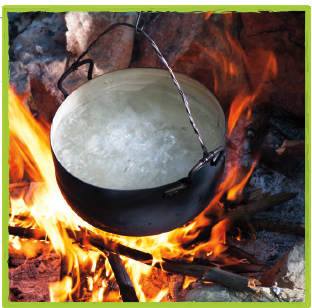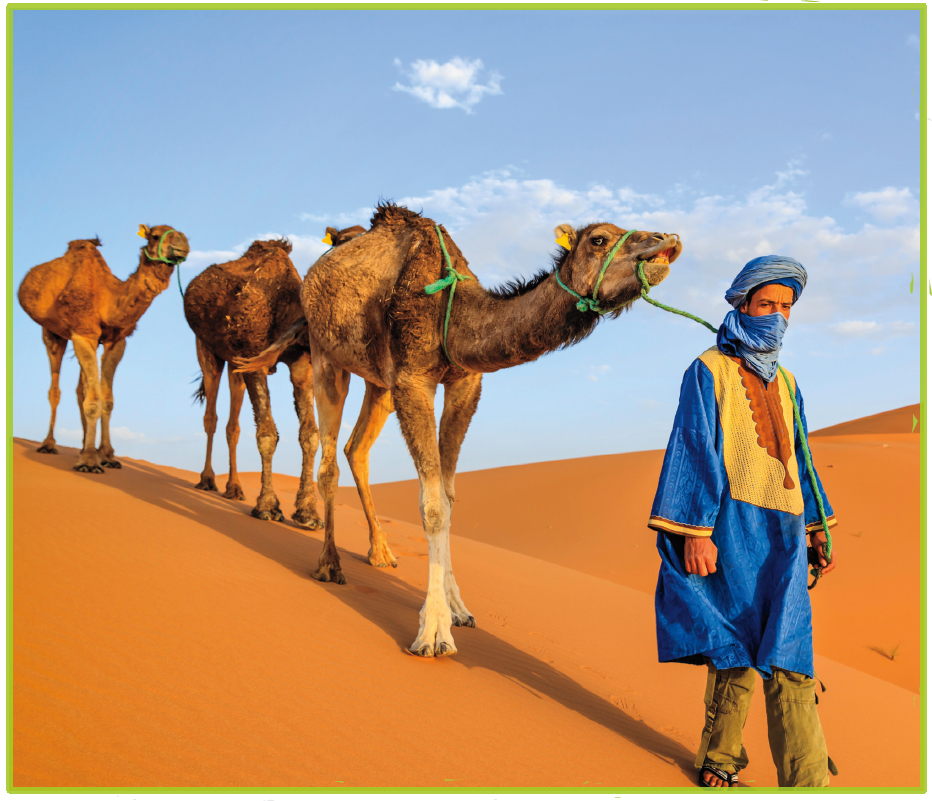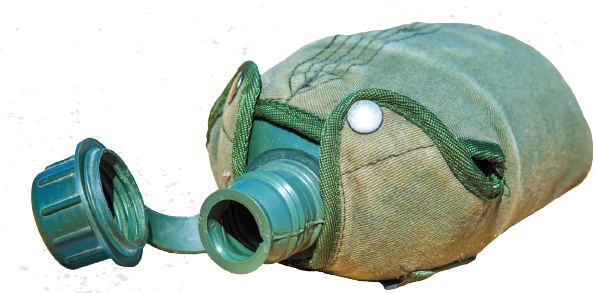Early humans thought of ways to survive the dangers of the world. The human imagination helps people survive when food, water, and shelter are hard to find.
Even today people can sometimes find themselves in danger. They may be lost in the woods. Sometimes they are in a risky situation, such as an earthquake, tornado, or fire. Rescue agencies will try to help people in these situations. But sometimes people must rely on their own survival skills.
Some people seek out danger on purpose. They are thrill-seekers and adventurers. They test their skills in difficult survival situations. These thrill-seekers climb mountains. They explore underground caves. They camp in dangerous . Sometimes they swim or scuba dive in ocean areas that they know will be treacherous.
Humans are champions at adapting to new situations. We face dangers similar to those survived by early humans. We also face man-made dangers. Through culture and technology we find new ways to survive and thrive.
A deserts extreme daytime and nighttime temperatures can be very dangerous.
Many people enjoy camping and exploring the woods. If a person gets lost, its important to know what to do first.
Creating a signal to stand out in the woods can help direct rescuers to your location. Rescuers will know theyre getting close if they see something out of the ordinary.
ITS TRUE!
White pine needles are a natural source of Vitamin C. Making a tea with white pine needles will boost your immune system and help avoid malnutrition.
FACT OR FIB?
People who are lost in the woods should search for a food source first.
Evidence
It is tempting for hungry wanderers to search for food first. This may not be necessary if a prepared camper has brought along snacks. However, some people who get lost are not prepared. In this case, survival experts say that food will become an important priority. But should it be first?
Answer: FIB
People can live for weeks, or even months, without food. They can only live for up to a week without water. Survival experts suggest looking for lifesaving resources in this order: shelter, water, fire, and then food. Without shelter and warmth, a victim might die within 24 hours of .
What if you are lost in the woods with no shelter? Use material that is easily found in the forest, such as wood. People can find shelter in hollow trees. They can also build rough shelters with tree . They can use leaves to help keep rainwater out.
* * *
In the wilderness, even clean-looking water could be dangerous. It is impossible to tell if drinking water is safe just by looking at it. Campers and hikers who have planned ahead bring water with them. They may also bring tablets. These tablets kill harmful bacteria. They make water safe to drink in about 30 minutes. They are available at sporting goods stores and pharmacies.
Drinking water from a still pond without the proper tools is never a good idea.
ITS TRUE!
Hypothermia is a very dangerous condition. People lose body heat quickly from the head and neck. Adventurers in cold climates should cover their heads to prevent heat loss.
FACT OR FIB?
You must boil water for at least 10 minutes to make it safe to drink.
Evidence
Unprepared people who are lost in the woods must drink water from ponds, lakes, or streams. This water may contain bacteria or parasites that can make a person sick. To make it safe to drink, many people boil water for 10 minutes.
Answer: FIB
It does not take 10 minutes to kill off dangerous bacteria and parasites. Boiling water for up to three minutes is enough to make it safe.
If youre going to boil water, youll need a fire. To build a fire without matches, gather dry twigs and . Using the smaller twigs, create a standing triangle with tinder placed in the center. Use a lens from a pair of eyeglasses, binoculars, or a camera. Concentrate the suns rays on the tinder until it smokes and sparks.
Dig a small hole and line it with dirt and clay. Fill the hole with water. Heat rocks with the fire. When the rocks are hot enough, move them with a strong stick into the small pool of water. The hot rocks will boil the water.
CHAPTER 2
SURVIVING IN THE DESERT
Keep your mouth closed or covered if you must walk in the desert. This slows breathing and can help prevent .
People should never go into a desert without enough water to survive. In the desert the human body needs about 1 gallon (3.8 liters) of water a day. Some people who are lost in a desert think about drinking their own .
ITS TRUE!
In the Atacama Desert in Chile, about 0.5 inch (1.3 centimeters) of rain falls each year. People there harvest fog in special mesh screens. The screens catch droplets of moisture. They collect enough water this way to take showers and grow flowers.
FACT OR FIB?
Drinking your own urine will help you stay .
Evidence
Even thrill-seekers who are prepared to explore desert can get into trouble. If they run out of water some people may drink urine.
Answer: UNDECIDED
If a person has recently had water, their urine is about 95 percent water. In that case urine will help them survive. But people who suffer from dehydration do not have urine with a high water content. Their urine contains higher levels of waste materials such as nitrogen, potassium, and calcium. These materials will stress their kidneys.
People can live about a week without water. If they can drink urine people can add a few days to their survival.
* * *
Extreme heat and lack of water are huge risks to people in the desert. Another extreme danger that few people are aware of is storm weather
FACT OR FIB?
A sandstorm is one of the biggest dangers in a desert.
Evidence
The Sahara is a desert in Africa. It is the largest hot desert on Earth, and it is very dry. The Sahara may get rain twice in one week, and then not again for the next three years! It gets fewer than 3 inches (7.6 cm) of rain per year. This means that the desert sand is almost always loose and dry.

